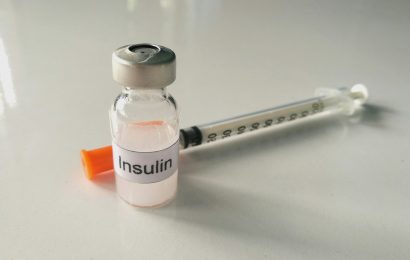People are often taught that there are three types of diabetes: Type 1, Type 2, and gestational. In reality, there are actually many more types, but the simplified explanation is that if you have diabetes, you likely have one of these three.
What is gestational diabetes?
The American Diabetes Association defines gestational diabetes as “diabetes diagnosed during pregnancy that is not clearly overt diabetes.” Like pregnancy, gestational diabetes (GDM) is temporary. GDM will resolve in about 90% of women after they’ve given birth. It’s important, though, to distinguish GDM from women with preexisting diabetes (Type 1 or Type 2) who are pregnant.
Who gets GDM and why?
Obviously, only women can get GDM. It’s estimated that up to 18% of pregnancies are affected by GDM. Of course, not all pregnant women get GDM, but there are certain factors that can put a woman at risk, including:
• Being overweight prior to becoming pregnant
• Being a member of certain ethnic groups: Hispanic, African-American, Asian, Native American
• Having impaired glucose tolerance or impaired fasting glucose
• Having glucose in the urine
• Having high blood pressure
• Being older than 25 when pregnant
• A family history of diabetes
• Having had a baby weighing more than 9 pounds
• Having had a stillborn baby
• Having previously had GDM
• Having too much amniotic fluid
You might have noticed that many of the risk factors for GDM are the same as for Type 2 diabetes. Some women with GDM will have had none of the above risk factors, by the way. Why some women without any of the above risk factors develop GDM is unknown. What we do know is that the incidence of GDM in the US has increased over the years, most likely due to the increasing prevalence of overweight and obesity in this country. GDM is a common complication of pregnancy. It’s also important to realize that if you have GDM, you’re at a considerable risk for getting Type 2 diabetes later in life.
How is GDM diagnosed?
Experts in diabetes and pregnancy have debated for many years over when and how to diagnose GDM. In the past, only women who had risk factors, like a family history of diabetes, were checked for GDM. But in 2001, guidelines changed and generally now all pregnant women at 24 to 28 weeks gestation (second trimester) are screened. Higher risk women are screened much earlier, usually at their first prenatal visit.
There are two screening methods, one that involves a two-step process of drinking 50 grams of glucose then having your blood glucose checked an hour later. If the blood glucose reading is above 140 mg/dl, you’re deemed being at high risk and will have another glucose tolerance test. This test involves drinking a larger amount of a glucose drink, followed by a blood glucose checks each hour for three hours. If two out of those three glucose checks are higher than “normal,” you’ll be diagnosed with GDM.
There is also a one-step method involving drinking a solution with 75 grams of glucose and having a glucose checks at two hours. The ADA endorses this screening test, but it’s more expensive to do and can also increase the incidence of GDM. If you are pregnant or planning a pregnancy, be sure to talk with your obstetrician about when and how you should be screened for GDM.
What’s the risk of having GDM?
Having any type of diabetes is very serious due to possible complications that can occur. It’s important to note that women who have GDM can and do have successful, healthy pregnancies. But GDM must be carefully managed to ensure a healthy baby, and a healthy mother, too.
A lot happens in the body when a woman is pregnant. The hormones estrogen and progesterone rise, leading to increased insulin secretion and decreased production of glucose by the liver. The fetus uses a lot of the mother’s glucose, which can lead to low blood glucose levels in the mother. As pregnancy progresses, other hormones kick in, including human placental lactogen, cortisol, and prolactin. These hormones, combined with higher levels of estrogen and progesterone, can cause insulin resistance. The pancreas, therefore, kicks into high gear and secretes more insulin. In healthy, low risk women, this isn’t a problem. But in women who are already at risk for diabetes, this isn’t good news; the pancreas can’t keep up with the demand for insulin. As a result, insulin resistance continues and GDM can set in.
What can happen in GDM?
Again, it’s important to realize that GDM can (and should) be effectively managed. But if it’s not managed properly, some of the complications that can occur include:
• A very large baby (as a result of high blood glucose levels in the mother that cross the placenta). This is called macrosomia. A large baby may mean having to have a C-section and can cause problems with delivery, as well as with the baby.
• Early labor and delivery, leading to respiratory distress syndrome in the infant. This can happen because the baby’s lungs haven’t fully developed yet. Babies born with this may need help breathing until their lungs are fully formed.
• Low blood glucose in the infant due to high levels of insulin.
• Jaundice due to a liver that isn’t fully formed yet.
• Higher risk of obesity and Type 2 diabetes (in the baby) later in life.
As I previously mentioned, women who have GDM are at higher risk for having GDM again during pregnancy, as well as a higher risk of Type 2 diabetes later on. In addition, women with GDM may have a higher risk of high blood pressure and high blood lipid (fat) levels, thereby raising the risk of heart disease.
More on GDM next week!




